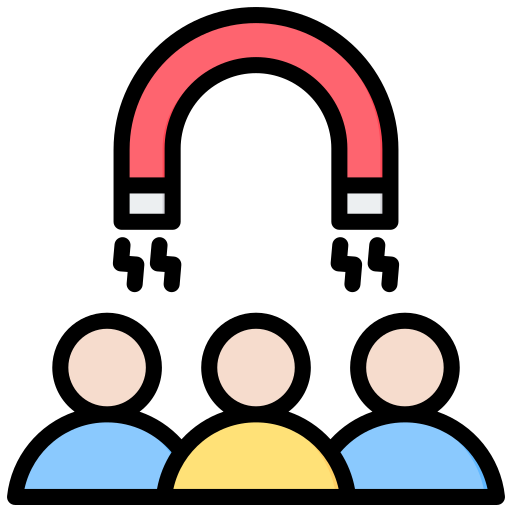
The excitement of launching a SaaS startup often revolves around growth—new sign-ups, skyrocketing website traffic, and a flurry of marketing campaigns. But what happens after you acquire those customers? Too often, founders celebrate the initial win without realizing the real battle has just begun: keeping those users engaged, happy, and paying.
Retention isn’t just a metric—it’s the lifeblood of a successful SaaS business. High churn rates silently kill startups, draining revenue, increasing acquisition costs, and ultimately making long-term scaling impossible. So why do so many SaaS companies struggle to retain users? More importantly, how can you stop the churn cycle before it’s too late? Let’s dive in.
1. The Hidden Cost of Poor Retention
Imagine spending thousands of dollars on marketing to acquire new users, only to see them leave after a few months. It’s like pouring water into a leaking bucket.
Acquiring a new customer costs 5-7x more than retaining an existing one.
- A 5% increase in retention can boost profits by 25-95%.
- Startups with a monthly churn rate above 5% struggle to scale.
In other words, without strong retention, your SaaS business is constantly running uphill, fighting to stay profitable. The fix? Understanding why users leave—and stopping them before they do.
2. Why Most SaaS Startups Fail at Retention
1. The Onboarding Black Hole
The moment a user signs up, a clock starts ticking. If they don’t experience value fast, they churn.
Many SaaS startups make the mistake of overwhelming new users with complex dashboards, vague instructions, and zero guidance. They expect customers to “figure it out.” But in reality? Most users give up and leave.
Fix It:
- Provide an interactive product tour guiding users through key features.
- Set up automated email & in-app onboarding sequences.
- Ensure users experience a quick win in the first 5 minutes (e.g., “Create your first project now!”).
Example: Slack’s onboarding ensures users send their first message immediately, making them feel productive from day one.
2. Weak Product Stickiness
Retention isn’t just about preventing cancellations—it’s about making your product so valuable that users can’t imagine working without it.
If customers only use your software occasionally or find alternatives easily, they won’t stick around.
Fix It:
- Identify your aha moment (the action that turns users into loyal customers) and accelerate that journey.
- Integrate your SaaS with other tools your users rely on.
- Reduce time-to-value (TTV)—the faster users see results, the likelier they are to stay.
Example: Notion integrates with various platforms, making itself indispensable to productivity workflows.
3. Customer Support That’s Reactive, Not Proactive
Too many SaaS startups treat support as a damage control function, only responding when things go wrong. But great retention comes from proactive support.
Fix It:
- Offer live chat and instant help resources to prevent frustration.
- Use AI-driven bots to suggest solutions before users ask.
- Assign customer success managers to high-value accounts.
Example: Intercom’s chatbot reduces churn by giving instant answers before users even think of leaving.
4. Pricing That Drives Users Away
Pricing isn’t just about revenue—it’s a retention lever. If customers feel they’re paying too much for too little, they’ll leave.
Fix It:
- Offer value-based pricing that grows with the customer.
- Give users the flexibility to switch between plans.
- Provide retention discounts to at-risk customers.
Example: HubSpot’s tiered pricing allows startups to start free and scale affordably.
5. No Personalization in User Experience
A generic SaaS experience won’t cut it. If users feel like just another number, they’re more likely to churn.
Fix It:
- Use behavior-based onboarding & messaging.
- Suggest features based on past usage.
- Allow users to customize dashboards & workflows.
Example: Netflix’s personalized recommendations keep users hooked—SaaS products can do the same with feature suggestions.
3. Strategies to Fix Retention & Reduce Churn
- Identify At-Risk Customers Early – Use analytics to spot warning signs like reduced logins and intervene with targeted emails.
- Create a Customer Feedback Loop – Actively respond to surveys and improve based on user input.
- Gamify Engagement – Rewards, progress tracking, and badges can keep users engaged.
- Offer More Than a Product – Educational content, webinars, and industry insights keep users engaged beyond the tool.
4. Case Studies: How Top SaaS Companies Nail Retention
- Dropbox: Referral-Based Retention Dropbox kept users engaged by offering extra storage for referrals, turning customers into brand advocates.
- Grammarly: Personalized Engagement Grammarly sends weekly performance summaries, reminding users of its value.
- Canva: Sticky Collaboration Features Canva increased retention by making team collaboration seamless, so entire teams rely on it daily.
5. Measuring & Improving Retention
Track these key metrics to diagnose and fix retention issues:
| Metric | What It Measures |
| Churn Rate | % of customers lost over time. |
| Net Revenue Retention (NRR) | Revenue growth from existing customers. |
| Customer Lifetime Value (CLV) | Total revenue a customer brings. |
| Product Stickiness (DAU/MAU) | How frequently users engage. |
How to Improve These Metrics:
- Address churn reasons through exit surveys.
- Implement loyalty & referral programs.
- Offer high-touch support for enterprise accounts.
6. Final Thoughts: Make Retention a Priority
SaaS founders often chase growth at the expense of retention. But real profitability comes from keeping users engaged, happy, and renewing subscriptions.
Retention isn’t about stopping churn—it’s about building long-term relationships.
Start by improving onboarding, making engagement effortless, and listening to user feedback. Over time, these changes will drive sustainable growth and maximize customer lifetime value.
What’s your biggest retention challenge? Let’s discuss in the comments!
Contact us at https://lnkd.in/gihWy6sk.